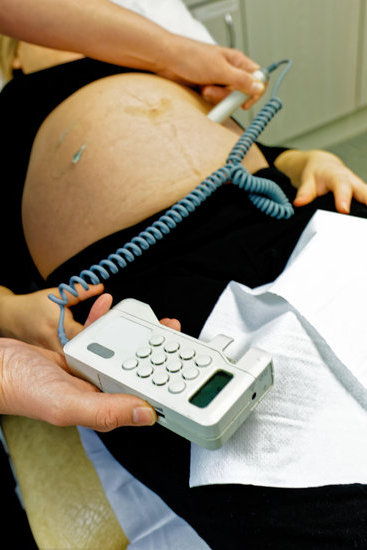What are the trimesters of pregnancy – an in-depth look at the stages of gestation. Pregnancy is divided into three separate trimesters, each with its own set of unique changes and developments. From the early weeks of conception to the final preparations for labor and delivery, understanding these trimesters is crucial for expectant mothers.
Pregnancy is an incredible journey filled with many changes, both physically and emotionally. Each trimester brings its own set of milestones, challenges, and excitement as your baby grows and develops. In this article, we will delve into a detailed exploration of each trimester, from the first 12 weeks to the final countdown to birth.
From managing common symptoms and discomforts to ensuring proper prenatal care, nutrition, and exercise recommendations for every trimester – we will cover it all. Additionally, we will discuss the importance of regular check-ups throughout pregnancy and highlight key aspects of fetal development in each stage. Join us as we unravel the intricacies of pregnancy’s three trimesters and gain a deeper understanding of this miraculous journey toward motherhood.
First Trimester
During the first trimester of pregnancy, a woman’s body undergoes numerous changes as it prepares to nurture a growing baby. From the moment of conception to the 12th week, there are significant developments happening both internally and externally. Here are some key changes and developments that occur during the first trimester:
- Implantation: During the first few weeks of pregnancy, the fertilized egg implants itself into the lining of the uterus, where it will begin to develop into an embryo.
- Organ development: By week 12, most of the baby’s vital organs have begun to form, including the heart, brain, and spinal cord.
- Hormonal changes: The body experiences a surge in hormonal levels, particularly human chorionic gonadotropin (hCG) and progesterone, which play crucial roles in sustaining the pregnancy.
Many women experience a range of symptoms and discomforts during the first trimester, such as nausea, fatigue, breast tenderness, and frequent urination. These can vary in severity from woman to woman. A large part of prenatal care during this stage is aimed at managing these symptoms and ensuring the overall well-being of both mother and baby.
It is important for expectant mothers to pay special attention to their nutrition and exercise habits during this time. A balanced diet rich in prenatal vitamins and regular physical activity can help support healthy fetal development. Additionally, seeking prenatal care early on in the pregnancy allows healthcare providers to monitor both maternal and fetal health closely. This may involve routine check-ups, ultrasounds, and various tests to ensure everything is progressing as it should be.
Second Trimester
During the second trimester of pregnancy, which typically spans from weeks 13 to 28, expectant mothers will experience many significant changes in their bodies as well as exciting milestones in their baby’s development. This period is often referred to as the “honeymoon phase” of pregnancy, as many women find that their energy levels return and any early pregnancy symptoms such as nausea and fatigue start to diminish.
However, it’s important for pregnant women to stay informed about the developments taking place during this time and understand what to expect.
Physical Changes and Development
During the second trimester, pregnant women will likely notice their abdomen starting to visibly expand as the baby grows. They may also experience weight gain, breast tenderness, and changes in skin pigmentation. Internally, the baby’s organs continue to develop, and by around week 20, the mother will start feeling fetal movements or kicks.
Milestones in Fetal Development
One of the most anticipated milestones during the second trimester is the anatomy scan, which is usually performed around week 20. This ultrasound provides a detailed look at the baby’s organs and can help detect any potential abnormalities. Additionally, by the end of the second trimester, most babies are viable outside of the womb with medical intervention if born prematurely.
Challenges and Considerations
While many women enjoy increased energy levels during this time, they may still face certain challenges such as back pain or round ligament pain due to their growing bellies. It’s important for expecting mothers to continue with regular prenatal check-ups to monitor their health and that of their growing baby. Additionally, it’s essential for pregnant women to follow proper nutrition guidelines and engage in safe physical activities recommended for this stage of pregnancy.
The second trimester is a special time for expectant mothers as they witness remarkable changes both within themselves and in their growing babies. By being knowledgeable about these developments, seeking proper prenatal care, and maintaining a healthy lifestyle throughout these weeks, women can ensure a smoother transition into the third trimester and prepare for labor and delivery.
Third Trimester
The third trimester of pregnancy, which typically spans from weeks 29 to 40, is a crucial period for both the expectant mother and her growing baby. As the due date approaches, there are significant changes and preparations taking place in the body in anticipation of labor and delivery. Here’s a breakdown of what to expect during this final stage of pregnancy:
- Increased discomfort: During the third trimester, many women experience heightened discomfort due to the increasing size of the baby. This may include back pain, frequent urination, shortness of breath, and difficulty sleeping.
- Fetal development: The third trimester is a time of rapid growth and development for the fetus. The baby’s organs continue to mature, and they gain weight at a faster rate. By the end of this trimester, most babies are positioned head down in preparation for birth.
- Preparing for labor: As labor approaches, women may start experiencing Braxton Hicks contractions or “practice contractions.” There may also be an increase in vaginal discharge as the body prepares for delivery.
It’s important for women in their third trimester to stay vigilant about monitoring their health and attending prenatal check-ups regularly. These appointments allow healthcare providers to track the baby’s growth and ensure that both mother and child are healthy and progressing as expected.
In addition to medical care, it’s also crucial for expectant mothers to maintain a healthy lifestyle by eating well-balanced meals, staying physically active with prenatal exercise, managing stress levels, and getting enough rest in preparation for labor and delivery. Taking these steps can help make the final stretch of pregnancy as smooth as possible.
Common Symptoms and Discomforts During Each Trimester
Pregnancy is a unique and life-changing experience for women, but it also comes with its fair share of discomforts and symptoms. Understanding what to expect during each trimester can help expectant mothers better prepare for the challenges ahead.
During the first trimester (weeks 1-12), women often experience nausea, fatigue, breast tenderness, and frequent urination. These symptoms are primarily due to hormonal changes and the body adapting to pregnancy. Many women also experience morning sickness, which can range from mild queasiness to severe vomiting. It’s important for pregnant women to listen to their bodies during this time and rest as needed.
Moving into the second trimester (weeks 13-28), some of the discomforts experienced in the first trimester may start to wane. However, new symptoms such as back pain, varicose veins, and swelling in the feet and ankles may arise. Women may also notice increased appetite and weight gain during this trimester as their baby continues to grow rapidly.
As the third trimester (weeks 29-40) approaches, symptoms such as heartburn, shortness of breath, and difficulty sleeping may become more pronounced. The growing baby puts pressure on internal organs and can lead to these discomforts. Additionally, Braxton Hicks contractions often occur during this trimester as the body prepares for labor.
It’s important for pregnant women to communicate any concerning symptoms or discomforts with their healthcare provider in order to receive proper guidance and care throughout each trimester of pregnancy.
| Trimester | Common Symptoms |
|---|---|
| First Trimester | nausea, fatigue, breast tenderness, frequent urination |
| Second Trimester | back pain, varicose veins, swelling in feet/ankles |
| Third Trimester | heartburn, shortness of breath, difficulty sleeping |
Importance of Prenatal Care and Check-Ups Throughout Pregnancy
Prenatal care and regular check-ups throughout pregnancy are crucial for the health and well-being of both the mother and the developing baby. These appointments allow healthcare providers to monitor the progress of the pregnancy, address any concerns or complications, and provide essential support and guidance to the expectant mother.
Monitoring Maternal Health
During prenatal appointments, healthcare providers will monitor the mother’s health by checking her blood pressure, weight, and overall well-being. They will also conduct various tests to screen for conditions such as gestational diabetes, preeclampsia, and anemia. Regular check-ups enable healthcare professionals to detect and address any potential issues early on, ensuring the best possible outcome for both mother and baby.
Assessing Fetal Development
In addition to monitoring maternal health, prenatal care visits also focus on assessing fetal development. Healthcare providers will track the baby’s growth, listen to their heartbeat, and perform ultrasound scans at certain points throughout the pregnancy. These measures help ensure that the baby is developing as expected and detect any potential abnormalities or complications that may require further attention.
Educating and Supporting Expectant Parents
Prenatal care appointments also serve as valuable opportunities for healthcare providers to educate expectant parents about various aspects of pregnancy, childbirth, and postpartum care. They can offer guidance on nutrition, exercise, labor preparation, breastfeeding, newborn care, and more. Additionally, these appointments provide a supportive environment where parents can ask questions, express concerns, and receive reassurance during this significant life transition.
Overall, prenatal care plays a vital role in promoting a healthy pregnancy and ensuring the best possible outcomes for both mother and baby. It allows for early detection of potential issues, provides essential education and support to expectant parents, monitors fetal development closely, and establishes a strong foundation for a smooth transition into parenthood.
Nutrition and Exercise Recommendations for Each Trimester
During each of the three trimesters of pregnancy, it is essential for expectant mothers to pay close attention to their nutrition and exercise routines. The body goes through various changes during these stages, and it’s important to ensure that both mother and baby are getting the right nutrients and physical activity.
In the first trimester, it’s crucial for pregnant women to focus on foods that are rich in folic acid, iron, calcium, and protein. These nutrients help in early fetal development and reduce the risk of birth defects. It’s also recommended to take prenatal vitamins as they can help fill in any nutritional gaps. As for exercise, light to moderate activities such as walking, swimming, or prenatal yoga are generally safe during this time.
Moving on to the second trimester, the nutritional needs increase as the baby starts growing more rapidly. Expectant mothers should focus on eating plenty of fruits and vegetables, whole grains, lean proteins, and healthy fats. Staying hydrated is also important. In terms of exercise, low-impact activities like stationary biking or modified Pilates can help maintain fitness levels without putting too much strain on the body.
Finally, in the third trimester, nutrition becomes even more crucial as the baby continues to grow rapidly. Consuming small but frequent meals can help manage discomfort due to a growing uterus pressing against the stomach. Calcium-rich foods become particularly important at this stage for fetal bone development. When it comes to exercise, movements that encourage optimal fetal positioning such as prenatal dance classes or gentle stretching exercises are recommended.
| Nutrition | Exercise |
|---|---|
| First Trimester: Focus on folic acid, iron, calcium and protein; Take prenatal vitamins; Light to moderate activities such as walking | Second Trimester: Increase intake of fruits & veggies, whole grains & lean proteins; Stay hydrated; Low-impact activities like stationary biking & modified Pilates |
| Third Trimester: Small but frequent meals; Calcium-rich foods for fetal bone development | Movements encouraging optimal fetal positioning such as prenatal dancing classes & gentle stretching exercises |
Understanding Fetal Development and Changes in Each Trimester
In conclusion, understanding the trimesters of pregnancy is crucial for expectant mothers as it allows them to anticipate and prepare for the changes and developments that they and their baby will go through. The first trimester, which spans from weeks 1 to 12, is a time of rapid changes in the body and significant developments in the growing fetus.
The second trimester, weeks 13 to 28, is characterized by visible growth and important milestones such as feeling the baby’s movements. Finally, the third trimester, from weeks 29 to 40, is a period of preparation for labor and delivery as the baby continues to develop and gain weight.
Throughout each trimester, women may experience common symptoms and discomforts such as nausea, fatigue, and back pain. It’s essential for pregnant women to seek prenatal care and regular check-ups with healthcare providers to monitor their health and the development of the baby. Additionally, following proper nutrition and exercise recommendations for each trimester can support both maternal health and fetal development.
Understanding fetal development and changes in each trimester not only empowers expectant mothers but also helps them ensure a healthy pregnancy. By being knowledgeable about what to expect during each trimester, women can better take care of themselves and their growing baby. With proper care, support, and information about each stage of pregnancy, women can look forward to a safe delivery and a healthy start for their newborn.

Welcome to my fertility blog. This is a space where I will be sharing my experiences as I navigate through the world of fertility treatments, as well as provide information and resources about fertility and pregnancy.





